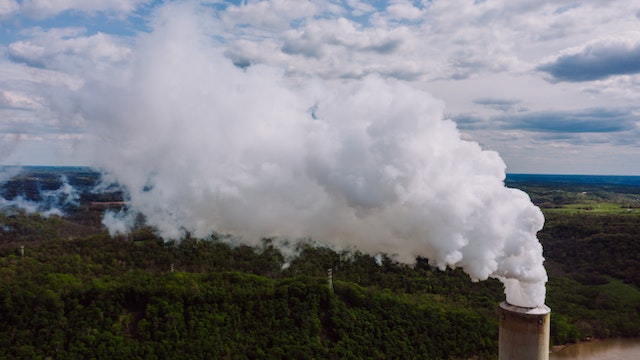Climate change is a terrifying problem that everyone living on this planet must be concerned about. The world is already experiencing the side effects of climate change, including prolonged droughts and extreme storms that have led to the loss of hundreds and sometimes thousands of lives. Inflation is another indirect side effect of climate change – the extreme weather conditions created by climate drive the prices of food and energy up, which results in inflation.
If we are to fight climate change and achieve the zero-emissions goal by 2050, we need to leverage the power of technologies like artificial intelligence. A survey done by BGC showed that 87% of private and public sector executives with decision-making power in AI and climate believe AI will be crucial to the fight against climate change.
AI is a core technology with several use cases that can be utilized in the fight against climate change. If you want to learn more about how AI can or is used in the fight against climate change, this article is for you. We will share with you all the practical applications of AI in the fight to reduce greenhouse gas emissions. Let’s get started!
Measurement of greenhouse gas emissions

One of the first things we need to do if we are to fight climate change is to build the capacity to accurately measure the greenhouse gas emissions going into the atmosphere. AI and machine learning can be used to analyze footage from satellites and other systems to determine the percentage of greenhouse gases that are going into the atmosphere.
On the micro level, AI models can be used to accurately measure the emissions generated by single-person operations such as driving a car. Having a system that accurately measures the emissions we release to the atmosphere through our daily activities can enable us to be more cautious about how we go about life.
For example, cloud computing platforms such as Microsoft’s Azure and AWS have carbon footprint calculators that enable users to visualize the amount of emissions their various computation tasks emit to the atmosphere. These kinds of tools are powered by AI. Access to this data can help us rethink how we use our devices and other appliances in our day-to-day lives.
Optimizing equipment to be more efficient

AI is also currently being used in different gadgets and equipment to improve their efficiency. Most automated equipment is usually more efficient than manual ones because of their ability to do tasks more efficiently. More efficiency means less energy consumption which in the end lowers the carbon emissions of the automated equipment.
For example, the autonomous vehicles used in warehouses are able to navigate obstacles much better than human drivers, which leads to more work being done in less time. This also translates into less energy consumption, lowering the carbon emissions of these vehicles. The same is true for most automated equipment used in factories and construction sites.
Predictive insights in designing

When designing products, engineers can leverage the power of AI and other core technologies to simulate their performance in real life. These simulations can help them visualize the expected greenhouse gas emissions of the product before putting it on the market. Having these insights helps engineers to make changes that can boost product efficiency at the design level. Such analytics are already being used by car companies to improve their efficiency hence lowering fuel or electricity consumption in the case of EVs.
Amazon and other big tech companies also use predictive analytics to estimate the efficiency of their data centers before physically constructing them. Design changes can be made in the cooling systems or the data center layout to ensure effective cooling and reduced energy consumption. All this wouldn’t be possible without artificial intelligence.
Predictive analytics to optimize supply

Companies have massive access to data about their target market, which they use to determine the potential demand for their products before manufacturing them. For example, Apple already has an estimate of the number of iPhone 14 models they expect to sell even before selling a single unit of these devices. They make these predictions by feeding their machine learning models with data about previous sales and the current market conditions.
Knowing the potential demand for products before manufacturing them helps to reduce the chances of creating excess products that the available market can’t consume. Creating extra products leads to the wastage of raw materials, which negatively impacts the environment. Of course, forecasting demand also reduces the potential financial losses companies might make if they create more products than the public demand.
Another benefit of using predictive analytics is that it offers you market insights in real time. This enables manufacturers to optimize the supply of their products in real time instead of relying on estimates made when market conditions are a bit different. The good news is that small companies also have access to these tools, so there is no excuse for not leveraging their power.
Weather simulations

Artificial intelligence is used in weather simulations, which are essential in forecasting future weather conditions. Data from the vast array of satellites, radar, and other data is fed into machine learning algorithms to predict the potential weather conditions for the next couple of days. So, why is weather forecasting important in the fight against climate change?
Knowing the expected weather conditions enables us to plan our day-to-day operations better. For instance, farmers can schedule irrigation activities based on weather data that shows when to expect rain. It would be wasteful to irrigate crops just a few hours before it rains. Remember, the wasted water is pumped using several kilowatts of energy, so wasting water indirectly leads to more greenhouse gas emissions.
Hazard forecasting

Another crucial role of AI in the fight against climate change is hazard forecasting. AI can be used to determine the possibility of extreme weather conditions such as the probability or war, floods or a prolonged drought. With this information, everyone can plan ahead of time on how to deal with the situation. The responsible parties can also put measures to mitigate the problem ahead of time.
Artificial intelligence was used to predict that global temperatures could increase by up to 20C by 2050 if nothing is done about the current rate of greenhouse gas emissions. All the responsible stakeholders, including governments, businesses, and several organizations, are using this data to make changes that will help us not face this temperature increment which could come with adverse side effects. Without such predictions, we would find ourselves in a hazardous situation without prior knowledge, which would be catastrophic.
Automated smart homes can improve energy efficiency in homes

Using smart appliances has been known to lower the overall energy consumption in homes. For instance, learning thermostats have proven to lower the energy bills of homes by up to 15%. That is a considerable percentage when you sum up the potential energy that can be saved by all homes if they were using devices like that.
Smart devices such as smart bulbs can also automatically turn on or off, depending on the situation. For instance, your smart security lights will automatically go off at 7 am and turn on at 7 pm, depending on the ambient light. These small changes alone can save much energy, lowering our homes’ carbon footprint.
AI enables the creation of robust communication tools.

The covid19 pandemic made us realize that it is actually possible to spend a couple of months without taking flights to attend business meetings or visit a friend in the other part of the world. Remote working was also (and still is) the order of the day in most companies. All this was possible thanks to robust communication and remote working tools such as Slack, FaceTime, Microsoft Teams, Zoom, and more.
For instance, FaceTime uses artificial intelligence to detect the position of everyone in a group video call to create a spatial audio effect, making the conversation more realistic. With these kinds of tools, people can effectively communicate with their loved ones without having to visit them physically all the time.
The reduction in movements has led to lower greenhouse emissions in the world. Future platforms such as the Metaverse will be made possible with AI. The main aim of all these technologies is to make conversations with our friends and family life-like, reducing the need to move all the time. One of the advantages that Meta points out when talking about the metaverse is the reduction in carbon emission since it will minimize unnecessary movements.
With the metaverse, people will be able to hang out at comedy clubs and attend concerts from the comfort of their homes. Of course, metaverse platforms such as Horizon Worlds are still years away from becoming mainstream. The platform currently has about 300,000 users after being around for about eight months.
Downsides of AI to fight climate change
One of the major downsides of using AI to fight climate change is the fact that AI models use a lot of energy, which is a net negative to the environment. According to a study by MIT, the storage and processing of data needed to fully train a large algorithm can consume huge amounts of energy – as much as 626,000 pounds (284,000 kg) of CO2.
These emissions are equivalent to driving an average American gas car for over five years. So, before we use AI to simulate weather conditions or do some sort of predictive analytics, we need to think about the energy needed to run those operations. It is also estimated that data centers worldwide account for over 1% of energy consumption.
The good news is that most of the major players in the tech industry are shifting their efforts toward clean energy. The majority of the data centers owned by Google, Amazon, Apple, and Microsoft are now powered by renewable energy, mainly generated from wind turbines and solar. However, several small companies that own data centers still rely on energy from the grid, which is usually not as clean as renewable energy.
Also, the computing hardware required to run AI operations is made from rare earth metals, which is another net negative to the environment. To fix this, companies that make various computing hardware devices need to shift to using recycled materials in their processes.
Overall, if we are to use AI as a tool to fight climate change, there is a need to address the source of energy that powers computers running the AI models. This will require all the major stakeholders, including the government and all the companies directly involved in developing AI technologies, to play their role.
Final thoughts
As we have seen above, there are many ways AI can directly or indirectly be used in the fight against climate change. Most of the applications of AI are related to data analytics, which is crucial to providing insights into certain future conditions, such as demand for specific products or forecasting weather.
Despite the many benefits of using AI to fight climate change, there are some drawbacks that need to be addressed. One of them is the massive amounts of energy required to run AI algorithms. Using renewable energy to power data centers is one of the most practical solutions to this problem. Developers could also optimize these algorithms to make them more energy efficient.



